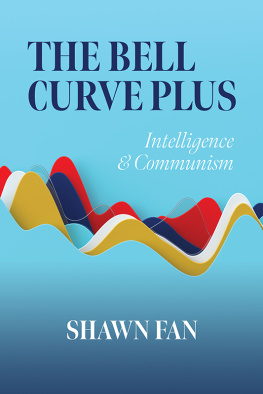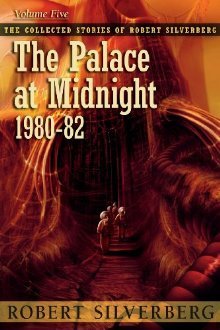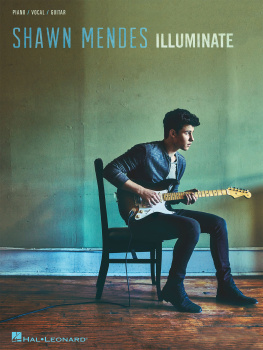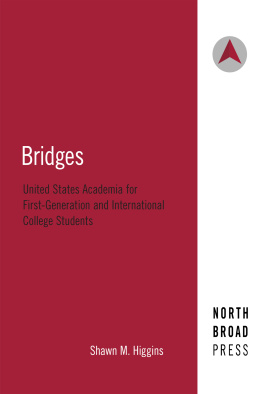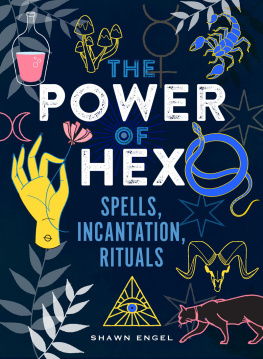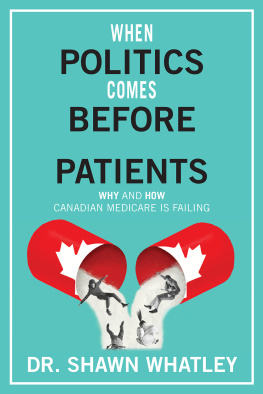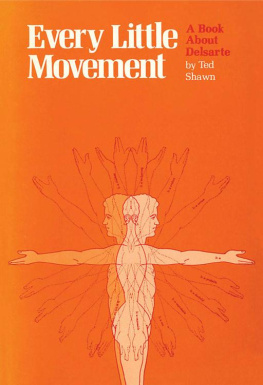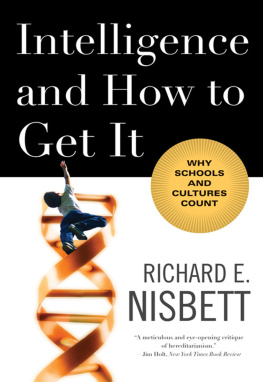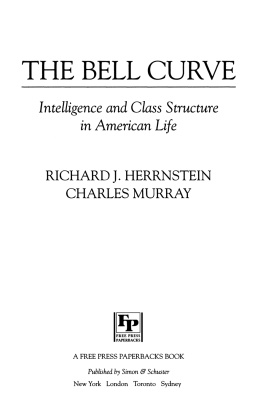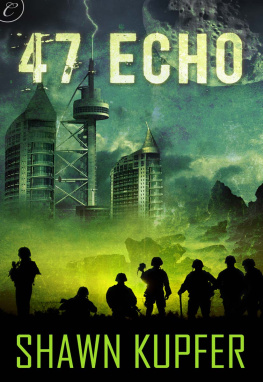CONTENTS
Preface
Chapter 1. Introduction
Chapter 2. Book Review of The Bell Curve
Chapter 3. Intelligence and Its Measurements
1. Definitions and Theories of Intelligence
2. Types of Intelligence and Their Measurement
3. Intelligence Testing
4. Wisdom
Chapter 4. Inventions, Discoveries, and Intelligence
1. Jews and their intellectual ability
2. East Asians inventions and discoveries in history
3. Westerners inventions and discoveries in history
4. Intelligence and civilization
Chapter 5. Culture and Cognitive Abilities
A. Material culture
1. Food
2. Clothing
2.1 Foot binding
3. Architecture
4. Art
5. Music and dance
6. Sports
7. Technologies
8. Comparing Ancient China with the Roman Empire
B. Immaterial culture and intelligence
1. Chinese language is primitive
1.1 Asian orthography doesnt curb creativity
2. Literature
3. Science
4. Traditional Chinese medicine and public health
5. Religion and mythology
6. Filial piety
6.1 Pros and cons of filial piety
7. Chinese thoughts and political systems
7.1 Mohism and Daoism
7.2 Confucianism
7.2a Confucianism is rule of virtue
7.3 Legalism
7.3a The legalists rule by law
7.3b Similarities and differences between Confucianism and legalism
7.4 Political systems in ancient and current China
C. The core value of Chinese civilization
Chapter 6. The Missing Measurement in Intelligence
Chapter 7. Chinese People and the CCPs Power Grab
A. Sun Yat-sen
1. Suns philosophy for revolution
2. Sun is the originator of the mouthpieces thought
3. Killings
4. Cheating/lies
5. Eviltraitor and democracy destroyer
6. For power
7. Corruption
8. The philosophy for people with no philosophic brain
B. Mao Zedong and communism
B-1. Mao and the CCP Before 1949
1. Communism started in China with cheating
2. LieNanchang Uprising leader was Tan Pingshan
3. MassacresAB League Campaign (1930)
4. Robbery (1930s)
5. The Fourth Front Army killed millions of people in Sichuan Province
6. Kidnapping and murdering (1934)
7. The Long March (19341935)
7.1 Zhou Enlai ordered the massacre before the Long March
7.2 The Red Army ate dumplings and mutton in restaurants, had leather clothes
7.3 Mao fought against his power challengers
8. Marco Polo Bridge Incident (1937)
9. The South Anhui Incident (1941)
10. Conspiring with the USSR and Japan, Mao fought for power
10.1 The CCP split China and established the CSR
10.2 Cooperation with Japan
10.3 Mao fought against the KMT and his political enemies
10.3a The murder of Liu Zhidan (19351936)
10.3b Mao got rid of Zhang Guotao (19371940)
10.3c Wang Ming was poisoned twice (19411945)
11. The Yanan Rectification Movement (19411945)
11.1 Terror, killing, speech forbidden
11.2 Cultivated poppy, sold opium for financial support
11.3 Lies
12. Human Sea Attack
13. Siege of Changchun (1948)
14. Corruption
14.1 Mao Zedongs wives and sex partners
14.2 Promiscuity, changing wives, and marrying young
14.3 Discussing about corruption is prohibited
B-2. After Mao and the CCP came to power
1. Land reform (19471953)
2. Campaign to suppress counterrevolutionaries (19501952)
3. Korean War (19501953)
4. The Three-anti Campaign (1951) and Five-anti Campaign (1952)
5. The Anti-Rightist Campaign (19571959)
6. Great Leap Forward (19581962)
7. Socialist Education Movement (19631966)
8. Cultural Revolution (19661976)
9. Killing political opponents
10. Exporting revolution for more power
11. Communists enjoy life when they have powercorruption
C. Chinese people
D. Power and Chinese behavior
1. Communism fits China
2. The CCP has absolute power in China
3. Lies and violence are the two heirlooms of the CCP
4. All the sufferings of a nation are the results of the choices by its people
Chapter 8. Controlling People and Economic Construction
A. Control PeopleHuman Rights
1. One-child policy
2. Experts opinions give way to powerThree Gorges Dam
3. Mind control and purge of dissidents
3.1 Mind control
3.2 Purge of dissidents
4. June fourth massacre (1989)
5. Forced demolitions and evictions
6. Falun Gong and organ harvest
6.1 Religion
6.2 Falun Gong
6.2a Lies
6.2b Cruelty in crackdown
6.2c Killing
6.2d Organ harvesting
7. Concentration camps in Tibet and Xinjiang
8. 20192020 Hong Kong Protests
8.1 Brief review
8.2 Clamping down on the protests
8.3 Killing
8.4 Essence
8.5 Intelligence
9. Monitoring people
B. Development and China-US trade war
1. Pollution
2. Theft of intellectual property (IP)
3. Spies
4. Infiltration
5. Joining the World Trade Organization (WTO)
6. China-US Trade War
C. Corruption
1. Corruption
2. Privilege and expenditure
3. China will be the poorest country in the world in 20 years
D. Money transfer and immigration
Chapter 9. The CCPs Struggle for Hegemony and Conflict of Civilizations
A. Finance, aid, face, and export of corrupt culture
1. Financial aid to foreign countries
2. International students policy
3. Confucius Institute (CI)
4. The Belt and Road Initiative (BRI)
B. Territories
1. Taiwan
2. South China Sea
3. Senkaku Islands (or Diaoyu Islands)
C. Nuclear weapons and proliferation
D. Terrorism and coronavirus pandemic (COVID-19, the CCP Virus)
D.1 The CCP Virus (coronavirus) pandemic (20192020)
1. Brief review
2. What do we know about what happened in China?
3. Analysis of the pandemics
3.1 Original reason and source of the virus
3.2 Direct reasons
3.3 Process
3.4 Corruption
3.5 Results
3.6 Intelligence
Chapter 10. Communism, Conflicts of Civilization, Flaw of IQ and Strategies
A. Conflicts of civilizations
1. Communism fits East Asians intelligence
1.1 Defect of East Asian civilization
1.2 Experience and lies
1.3 Civilization is created by cognitive abilities
1.4 Conflicts of civilizations

